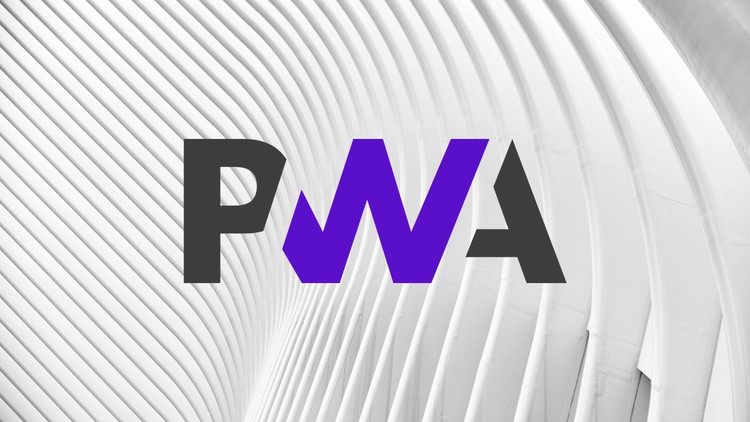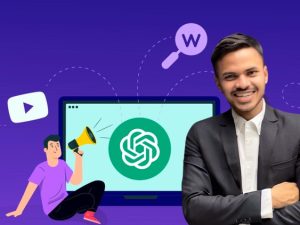Complete Progressive Web App Bootcamp
- Description
- Curriculum
- FAQ
- Reviews
What is Progessive Web App (PWA)?
PWAs are web applications created utilizing various explicit advances and standard examples to permit them to exploit both web and local application highlights. For instance, web applications are more discoverable than local applications; it’s much simpler and quicker to visit a site than to introduce an application, and you can likewise share web applications by essentially sending a connection.
Then again, local applications are better incorporated with the working framework and along these lines offer a more consistent encounter for the clients. You can introduce a local application so it works disconnected, and clients love tapping their symbols to handily get to their most loved applications, instead of exploring to it utilizing a program.
PWAs enable us to make web applications that can appreciate these equivalent favorable circumstances.
It is anything but a shiny new idea—such thoughts have been returned to commonly on the web stage with different methodologies before. Reformist Enhancement and responsive plan as of now permit us to fabricate versatile neighborly sites.
What will you learn in this course?
In this course you’ll begin dealing with your absolute first Progressive Web App (PWA) – a web application that can exploit a considerable lot of the highlights local applications have appreciated. You’ll likewise get more involvement with making a web application that works disconnected utilizing Service Workers. At last, you’ll make your application installable to the client’s home screen with the Web App Manifest file.
-
1IntroductionVideo lesson
In this part, we will introduce what we are going to make. We are going to create a progressive web app with the use of the firestore, user can add contacts, favorite the contacts and of course edit and delete the contact even in the offline situation. Why? Since this is progressive web app.
-
2Create pagesVideo lesson
First, we are going to create different pages with the use of the materializecss.
-
3Create input modal and edit modalVideo lesson
After we create the basic structure for this progressive web app. We are going to add the modals and also the necessary JavaScript.
-
4Add the floating action buttonVideo lesson
In this part, we are going to add the materialize css button, which is for trigger the add contact modal.
-
5Create icons for the progressive web appVideo lesson
In this part, we go to create app icon for this progressive web app. This is the icon for the desktop and mobile app.
-
6Create manifest fileVideo lesson
The manifest file tells the browser about your Progressive Web App and how it should behave when installed on the user's desktop or mobile device. Let's create the manifest file together.
-
7Open the web on Android SimulatorVideo lesson
-
8iOS Simulator icon problemsVideo lesson
-
9What is service workerVideo lesson
In this part, we will briefly introduce what is service worker and how it enhance the web page.
-
10Service worker lifecycle introductionVideo lesson
Every service worker goes through three steps in its life cycle--registration, installation, and activation. In this part, we will briefly introduce these three steps
-
11Service worker registrationVideo lesson
In this part, we will do the service worker registration process. We will first check whether the browser support service worker, after that we register the service worker.
-
12Service worker installationVideo lesson
The installation process of the service worker is to allow the pwa to cache all the necessary asset like icons, css and javascript. Let's take a look on how to add the installation process.
-
13Service worker activationVideo lesson
In this part, we will show when the service worker is activated.
-
14Using lighthouse to audit the progressive web appVideo lesson
In this part we will use the light house of google chrome developer tools to check the problems of the PWA. Then we will fix it one by one.
-
15Service worker listen fetch eventVideo lesson
Before make the app installable, we have to meet the criteria, so we need to add the fetch event listener inside the service work. So let's learn how to do it.
-
16Open the localhost of the mobile phoneVideo lesson
Typing localhost inside android real device or emulator cannot access the website as localhost. This part will show you how to fix it and meet the installable criteria
-
17Cache the core asset of the appVideo lesson
In this part, we will go to cache all the core assets to the cache. So in case the app offline, the app still can be displayed rather than a chrome default no internet page
-
18Return the cached assets to the appVideo lesson
-
19Dynamic CacheVideo lesson
It is not make sense/ possible to cache all the pages of an app to the assests. Instead, we use the dynamic cache to cache the pages that we visited. Let's learn how to do it
-
20Add a fallback pageVideo lesson
Sometime the page we haven't visited before. Instead of showing the default error page, we want to show our own customized fallback. Here will show you how.
-
21Limit the number of cacheVideo lesson
When we keep browsing more and more page, we will store a lot of cache at last. We want to limit the size so the cache will not get huge.
-
22Create Firebase projectVideo lesson
Since we need to use the firebase as a backend, we need to go to firebase to create a new project. And the we need to copy and paste the config file to our project.
-
23Add document in cloud firestoreVideo lesson
After we create a new project, it's time to add the data to cloud firestore. Let's learn how to do it
-
24Get realtime update with cloud firestoreVideo lesson
In this part, we get realtime updates with cloud firestore
-
25Create the template for the contactsVideo lesson
In this part, we will create a template for each contact, so in the next lecture, we can use this to render the contacts.
-
26Updating the UIVideo lesson
In the last lecture, we already created the template, now it's time to render it out.
-
27Configure Firestore offline persistenceVideo lesson
We will not cache the firestore data in the service worker. Instead we will implement firebase firestore offline persistence. This can render the data even offline.
-
28Delete document in cloud firestoreVideo lesson
In this part, we will implement the delete document to this PWA, it will delete the document in firestore and also remove the data in the UI.
-
29Edit document in cloud firestoreVideo lesson
In this part, we will implement the edit document to this PWA, it will edit the document in firestore and also edit the data in the UI.
-
30Toggle favoriteVideo lesson
In this part, we will implement the toggle favorite function.
-
31Render favorite pagesVideo lesson
In this part, we will render the favorites in the favorites page.

External Links May Contain Affiliate Links read more





